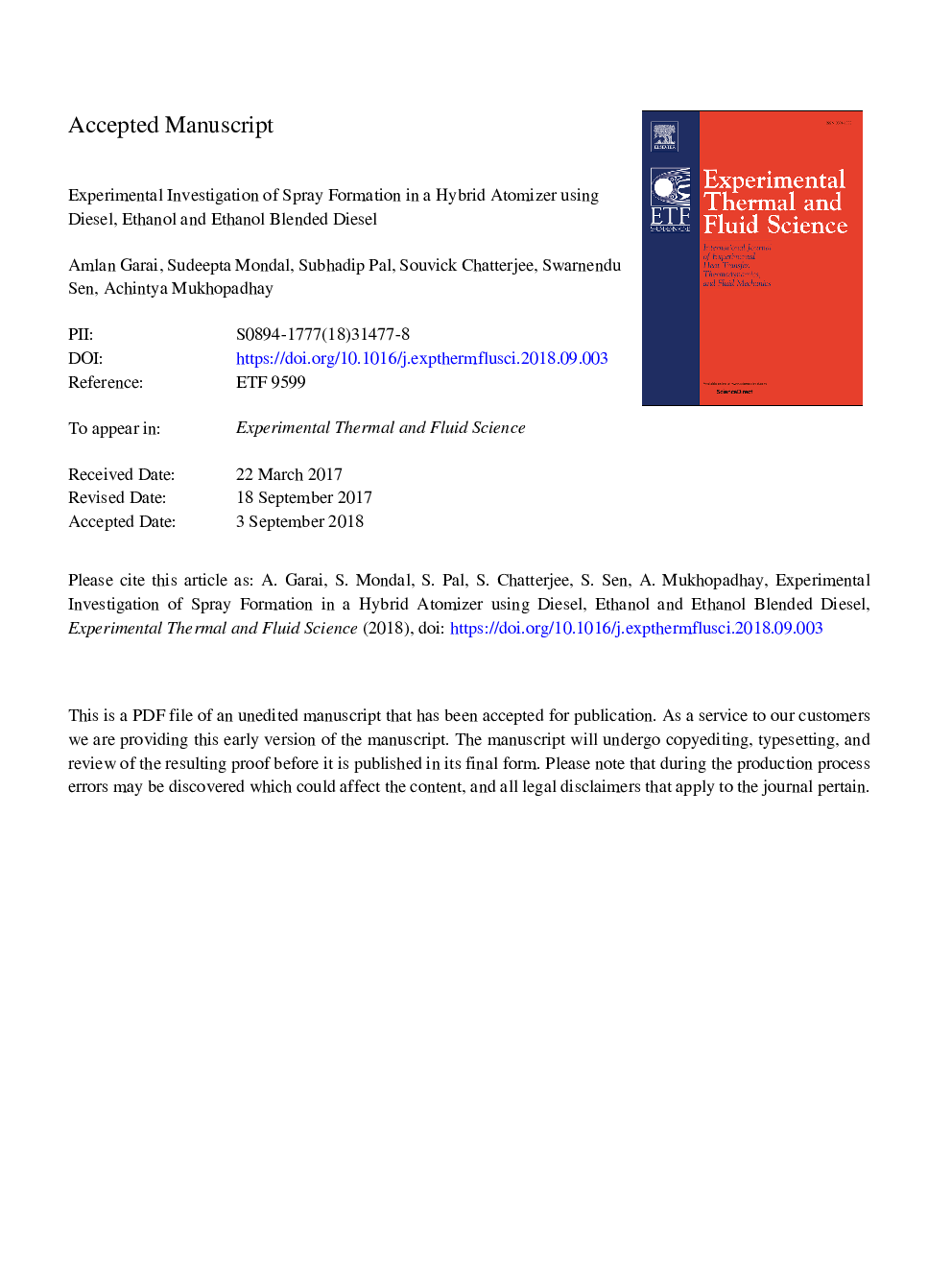| Article ID | Journal | Published Year | Pages | File Type |
|---|---|---|---|---|
| 10139844 | Experimental Thermal and Fluid Science | 2019 | 23 Pages |
Abstract
The declining resources of conventional fossil fuels, compounded with an ever-increasing problem of air pollution has motivated researchers around the world to search for alternative fuels for commercial and industrial usage. For the present experimental work, pure diesel, pure ethanol and two types of blends of both (diesel blended with 10% and 20% ethanol by volume) have been used for a comparative analysis of the spraying characteristics. The experiments have been performed on a hybrid nozzle in which the fuel sheet is sandwiched between two swirling air streams, the direction of the swirl being governed by the geometry of the tangential inlet design. It has been observed that owing to the onset of greater turbulence brought about by an increase in flow rates of the air streams, the instability of the liquid sheet increases. Addition of ethanol (a less viscous fluid) in diesel leads to a considerable change in the breakup characteristics. The experiments have shown that an increase in alcohol percentage has been almost always accompanied with a reduction in the breakup length and greater spread of the spray (a greater spray cone angle and a greater sheet width).
Related Topics
Physical Sciences and Engineering
Chemical Engineering
Fluid Flow and Transfer Processes
Authors
Amlan Garai, Sudeepta Mondal, Subhadip Pal, Souvick Chatterjee, Swarnendu Sen, Achintya Mukhopadhyay,
